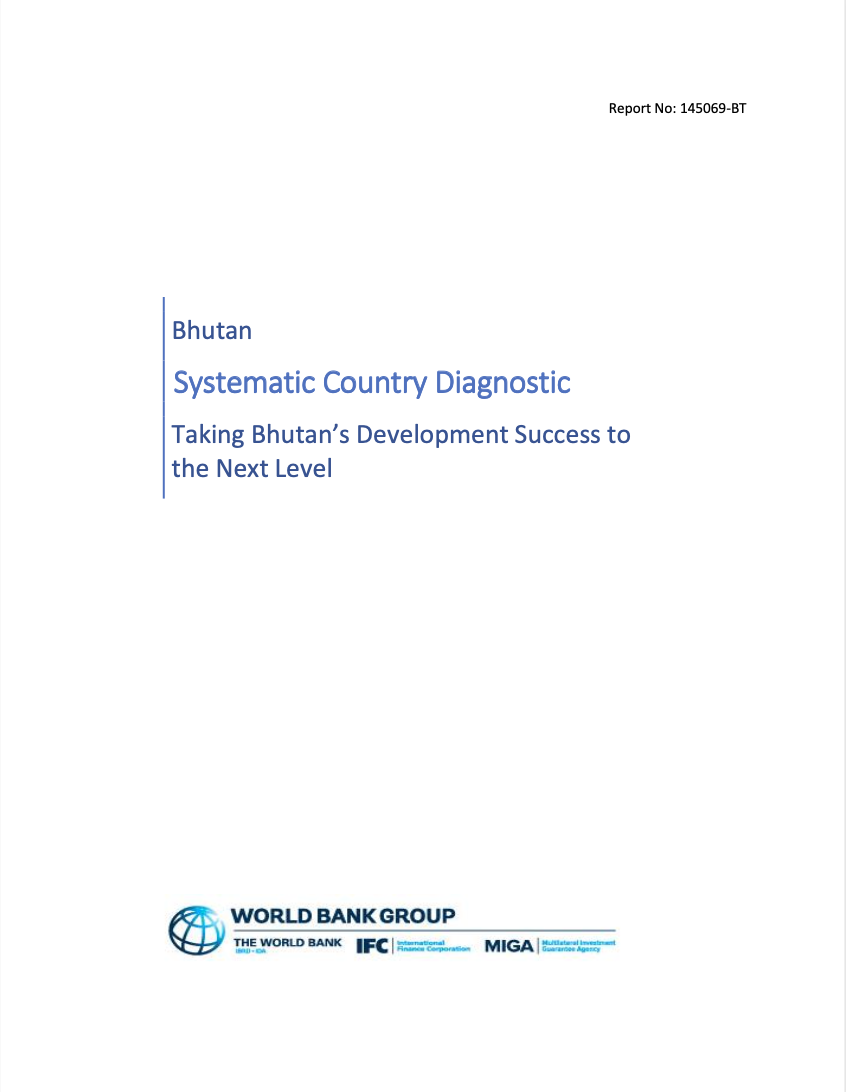Resource information
Bhutan is a small, landlocked country deep in the eastern Himalayas between India and China. Over a horizontal distance of just 100-150 km, the elevation rises from about 150 meters above sea level in the south to over 7,000 meters in the north. The population of about 735,0001 is scattered across steep mountain slopes and valleys, many in remote and far-flung hamlets. This makes Bhutan one of the most sparsely populated countries in the world, ranked 182 out of 215 countries. Nearly half the land area is protected to help preserve biodiversity. With forest coverage exceeding 70 percent, Bhutan is the only carbon-negative country in the world, absorbing more greenhouse gas emissions (GHG) than it produces, and not counting the carbon that its hydropower exports displace in India. Bhutan started opening up to the outside world only in the early 2000s, but its political and economic ties are still mainly with India. Despite sharing a long border with China in the north, the formal relationship is limited. Bhutan’s independence throughout its history has helped preserve its rich cultural heritage and traditions. As its development policies demonstrate, Bhutan strives to be self-sufficient and to conserve its environment and culture. Bhutan’s unique development philosophy, GNH, guides its development plans, emphasizing a holistic and inclusive approach to sustainable development. The four pillars of GNH are (a) good governance, (b) sustainable socioeconomic development, (c) preservation and promotion of culture, and (d) conserving the environment. Since 2008, Bhutan has had a development management system guided by the Constitution, with development strategies and annual budgets driven by GHN principles. The GNH Index and the GNH Policy Screening Tool are its main instruments for operationalizing GNH into the formulation of development policies. The GNH Index measures Bhutan’s progress toward maximizing GNH; the GNH Policy Screening Tool assesses how a new policy will affect GNH. Many of Bhutan’s development achievements can be attributed to this unique development framework, which has been supported by continued efforts to ensure good governance.

